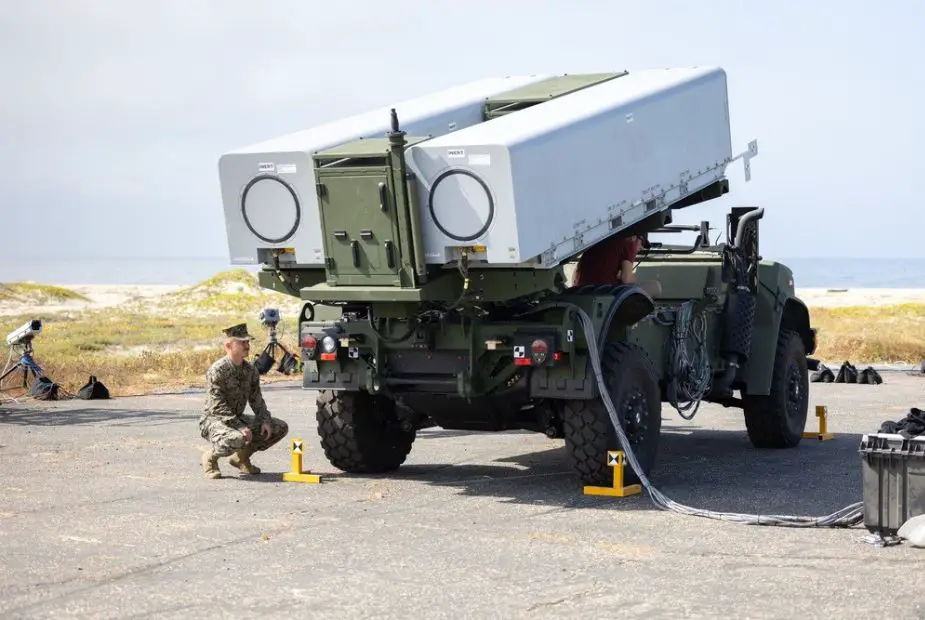Breaking news
US Defense Awards Contract to Oshkosh for ROGUE-Fire Units.
The US Department of Defense announced on April 23, 2024, that it has awarded a significant contract worth $40 million to the American company, Oshkosh Defense LLC, for the development and supply of remotely operated ground units for expeditionary fires (ROGUE-Fire). These systems are intended for use in the Navy and Marine Expeditionary Ship Interdiction System, which plays a crucial role in modern naval and maritime operations.
Follow Army Recognition on Google News at this link

The ROGUE Fires vehicle's autonomy lies in sophisticated software derived from a version of the US government-owned autonomy stack (Picture source: US DoD)
The Remotely Operated Ground Unit for Expeditionary (ROGUE) Fires vehicle system represents a significant advancement in military technology, integrating a missile launcher onto an unmanned variant of the Joint Light Tactical Vehicle (JLTV) chassis developed by Oshkosh Defense. This collaboration forms the backbone of the Ground-Based Anti-ship Missile (GBASM) system under development by the United States Marine Corps, enhancing its capabilities and providing a competitive advantage in modern warfare scenarios.
At the core of the ROGUE Fires vehicle's autonomy lies sophisticated software derived from a version of the government-owned autonomy stack, RTK, currently used in the Expedient Leader Follower (ExLF) and Autonomous Ground Resupply (AGR) programs at the Ground Vehicle Systems Center (GVSC). Bernie Theisen, Chief of the GVSC Robotics Division, emphasized the importance of this adaptation, highlighting its role in improving operational efficiency and vehicle effectiveness.
The ExLF and AGR programs at GVSC, commonly referred to as leader-follower initiatives, aim to enhance military ground vehicles with scalable robotic technology, minimizing human involvement in driving and improving mission performance. The integration of modular kits, common interfaces, and standardized architecture ensures seamless interoperability and adaptability in various operational scenarios, as noted by Theisen.
While the Marines are currently using the ExLF iteration of GVSC software for the ROGUE Fires program, Theisen emphasized the inherent flexibility of the software, allowing seamless updates to GVSC's RTK. This transition incorporates additional behaviors developed under the AGR program, enhancing the vehicle's autonomy and responsiveness. RTK represents a cornerstone in the Department of Defense's quest for expedient and cost-effective integration of ground robotic solutions, providing a standardized framework for future advancements in military technology.
The contract is structured as a hybrid agreement, combining elements of firm-fixed-price and cost-plus-fixed-fee, indicating a focus on both cost control and flexibility to meet the technical requirements of the project. Work defined in the contract will be distributed across three sites: Alexandria, Virginia, where 18% of the work will be performed; Gaithersburg, Maryland, accounting for an additional 15%; and the majority, 67%, will be conducted in Oshkosh, Wisconsin.
Scheduled for completion in December 2026, the project will utilize procurement funds from the Marine Corps fiscal year 2024 exercise totaling the contract amount. These funds were obligated at the time of award and are not subject to expiration at the end of the current fiscal year.
Defense News April 2024























